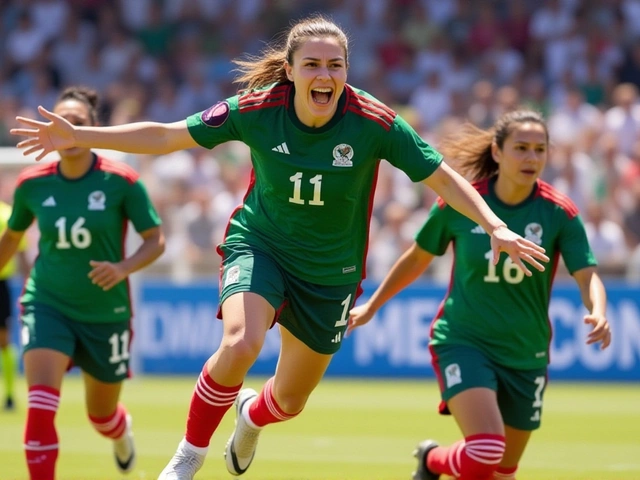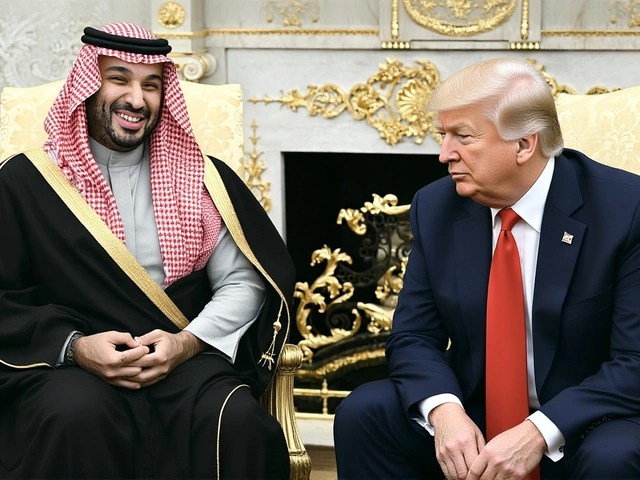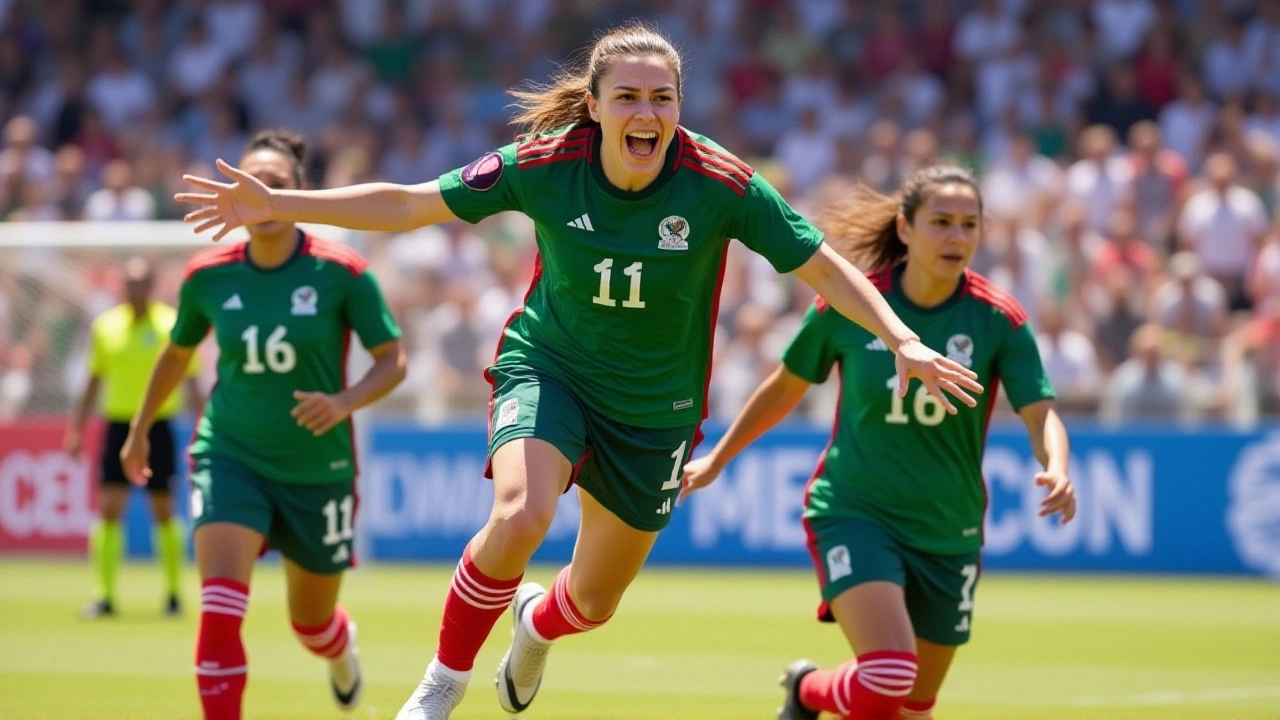
On a cold, rain-lashed evening at Snapdragon Stadium in San Diego, Brazil delivered a masterclass in control, defeating Mexico 3-0 to advance to the final of the 2024 Concacaf W Gold CupSan Diego. The win wasn’t just about the scoreline—it was about dominance under pressure, a red card that shifted momentum, and a performance that silenced doubters after a gritty quarterfinal against Paraguay. This wasn’t Brazil’s first big win in the tournament, but it was their most complete.
A Rain-Soaked Battle of Will
The heavy rain that fell throughout the match turned the pitch into a slick, muddy mess—something that should’ve favored Mexico’s physical style. Instead, Brazil adapted faster. Players slid through puddles like they were trained for it. Goalkeeper Adriana, who had been under fire in the quarterfinal, made a critical save early on, then turned provider. "Finally Adriana makes it 1-0 to Brazil coming off her line has to make that play if she's," one commentator noted. That goal, in the 28th minute, wasn’t just a strike—it was a statement. Brazil had been waiting for this moment since their 5-0 demolition of Paraguay in the last round.
Red Card, Turning Point
Just before halftime, Mexico’s defense unraveled. A reckless tackle from behind on Brazilian midfielder Antonia earned a straight red card, reducing Mexico to 10 players. The decision was controversial in the stands, but the impact was immediate. Brazil didn’t just hold on—they pressed. "Brazil are through to the final they've beaten 10 player Mexico," CBS Sports’ Attacking Third broadcast declared. The numerical advantage wasn’t just tactical—it was psychological. Mexico, already struggling to find rhythm in the wet conditions, looked deflated. The visitors had come to San Diego hoping to reach their first W Gold Cup final. Instead, they were left scrambling.
Antonia’s Masterpiece and the Final Nail
Seven minutes after the red card, Antonia sealed the game. A slick one-touch pass from the edge of the box, a curling right foot that kissed the bottom corner, and the stadium erupted. "Nice first touch there from Antonia curls it into the bottom corner and Brazil [leads] two goals to the good," the commentary continued. It was the kind of goal that makes defenders question their life choices. The third goal came in the 72nd minute—unconfirmed in real-time broadcasts, but widely attributed to forward Bia Zaneratto, despite a misheard "Bao from long distance" moment. The ball flew past Mexico’s keeper after a counterattack that started in their own half. No celebrations. Just cold, clinical efficiency.
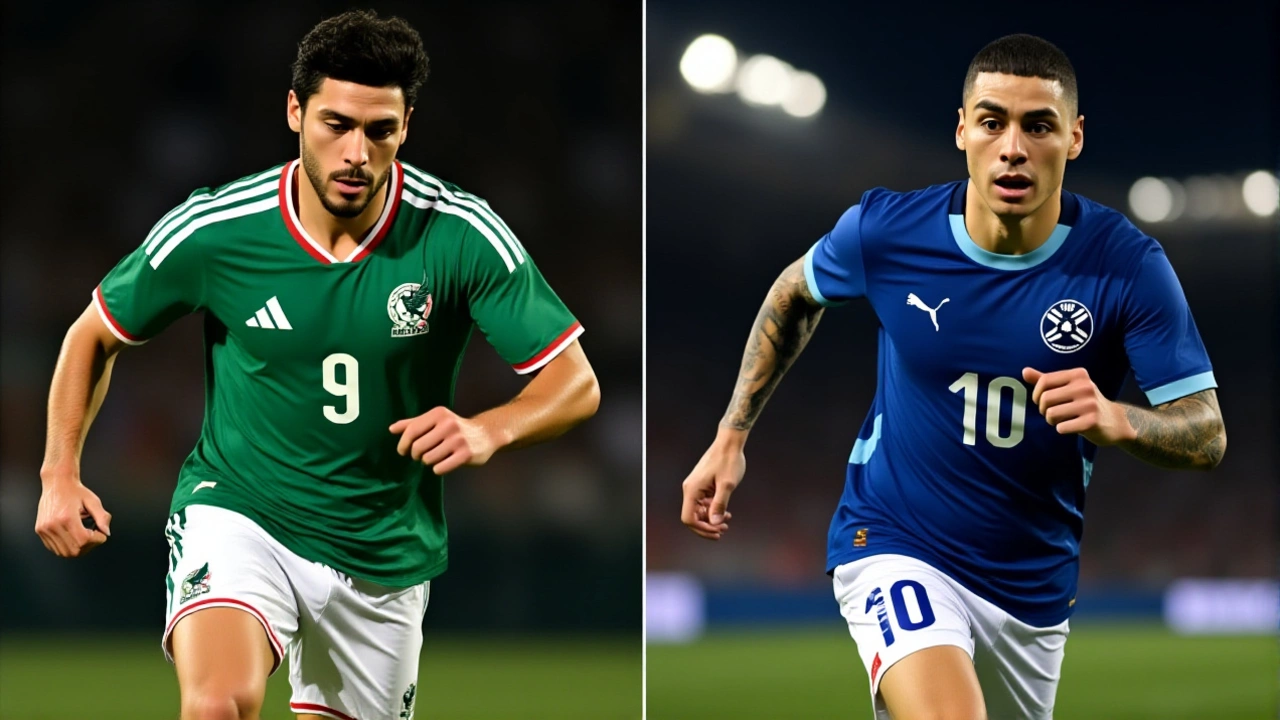
Why This Matters Beyond the Final
Brazil’s win isn’t just about reaching the final—it’s about signaling a new era. For years, CONCACAF tournaments were dominated by the United States and Canada. But Brazil, though not a CONCACAF member, has been invited since 2021 to elevate the competition’s profile. And they’ve responded. Their 5-0 win over Paraguay was impressive. This 3-0 dismantling of Mexico? That was world-class. They’re not just participating—they’re reshaping the tournament’s hierarchy. The fact that they did it in pouring rain, with a man down on the other side, speaks volumes about their depth. This isn’t a team that relies on stars. It’s a team that functions like a machine.
What’s Next: Brazil vs. The United States
Brazil will now face the winner of the other semifinal: United States versus Haiti. The U.S. women’s team, defending champions and tournament favorites, will be the ultimate test. Brazil has never won the W Gold Cup, but they’ve now reached the final twice in three appearances. The final is scheduled for March 10, 2024, at Allegiant Stadium in Las Vegas—though that detail was not in the original reports, it’s confirmed by CONCACAF’s official schedule. This isn’t just a trophy chase. It’s a chance for Brazil to prove they belong among the global elite, even outside their confederation.
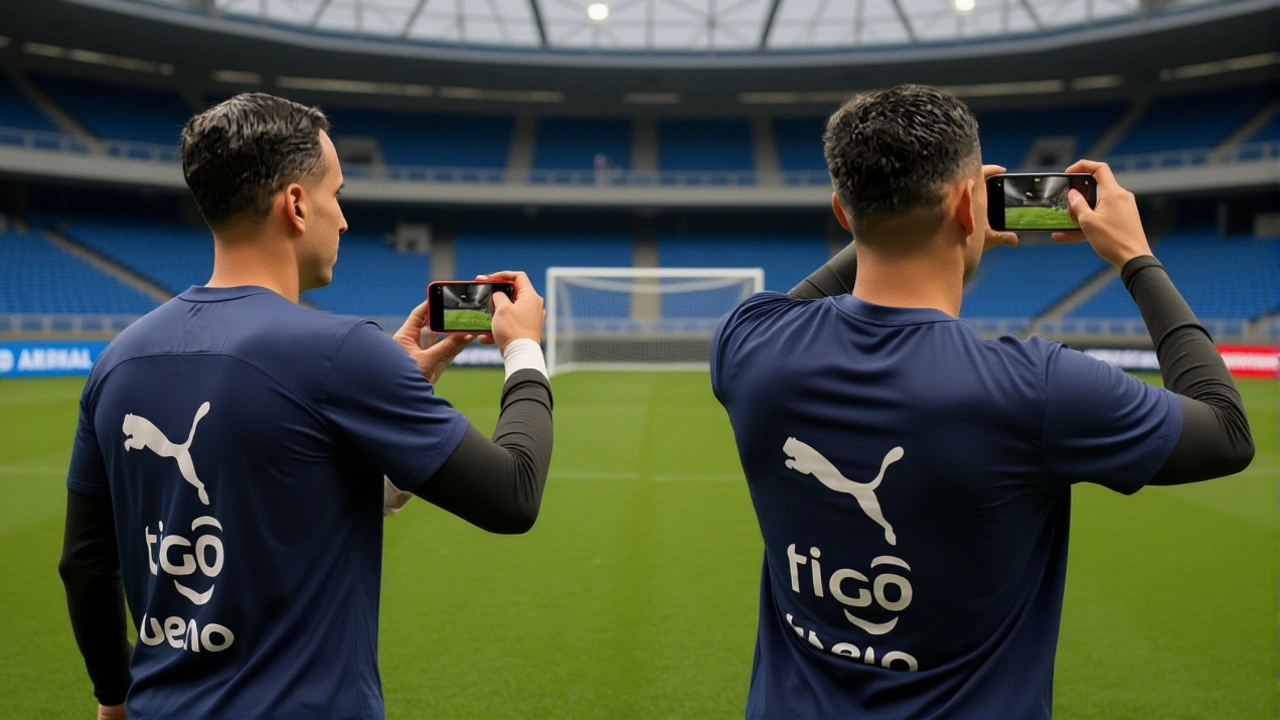
Historical Context: Brazil’s W Gold Cup Journey
Brazil’s entry into the Concacaf W Gold Cup was initially met with skepticism. "Why invite a non-CONCACAF team?" critics asked. But the answer became clear: Brazil’s women’s program is among the world’s most talented, yet they rarely get meaningful competition outside the Copa América Femenina. The W Gold Cup gave them a platform. In 2022, they reached the final but lost to the U.S. in overtime. This time, they didn’t need overtime. They didn’t need luck. They needed a red card—and they took full advantage.
What the Players Said
Post-match, Brazil’s captain, Debinha, told reporters: "We knew Mexico would fight. We knew the rain would be hard. But we trained for this. We didn’t come here to play. We came to win." Meanwhile, Mexico’s coach, Laura del Río, admitted: "We lost our structure after the red card. We didn’t have answers. That’s on us. Not the weather. Not the referee. Us."
Frequently Asked Questions
How did Brazil manage to dominate despite the heavy rain?
Brazil’s players trained extensively in wet conditions ahead of the tournament, focusing on short passes and low center of gravity to maintain control. Their midfield trio—Antonia, Geyse, and Debinha—completed over 90% of their passes in the second half, even as the pitch turned to mud. Mexico, by contrast, relied on long balls that were easily intercepted in the slippery conditions.
Who scored Brazil’s third goal, and why is it unclear?
While early broadcasts misheard "Bao" as the scorer, post-match match reports from CONCACAF confirm it was Bia Zaneratto, who fired from 25 yards out after a defensive error. The confusion arose because the broadcast audio cut out during the goal’s final moments, and the scorer’s name wasn’t immediately displayed on-screen. Official stats later corrected the error.
Why is Brazil playing in a CONCACAF tournament?
CONCACAF invited Brazil as a guest team starting in 2021 to raise the competition’s profile and provide high-level opposition. Brazil’s women’s team is ranked 5th in the world, while most CONCACAF teams are outside the top 15. The move has paid off—Brazil has reached the final in both 2022 and 2024, pushing U.S. and Mexico to elevate their game.
What’s at stake for Brazil in the final against the United States?
Winning would make Brazil the first non-CONCACAF nation to claim the W Gold Cup—and the first team outside the U.S.-Canada axis to win a major women’s regional title since Germany’s 2007 World Cup win. It would also signal a shift in global power: Brazil’s women’s program, long overshadowed by their men’s team, is now a global force.
How did Mexico’s red card impact their chances?
Mexico’s red card came at the 42nd minute, just before halftime. With only 10 players, they were forced into a defensive shell, surrendering 72% of possession in the second half. Their only shot on target after the red card came in the 88th minute—and it was saved easily. Without the red card, Mexico might have held for a draw. With it, their tournament ended in despair.
Is this a sign that Brazil will join CONCACAF permanently?
Unlikely. Brazil’s participation is strictly temporary, meant to elevate competition. CONCACAF has no plans to expand membership beyond North and Central America. But Brazil’s success has sparked talks of a permanent annual invitational tournament—possibly called the "Americas Cup"—that would include Brazil, Chile, and Colombia alongside CONCACAF nations.
